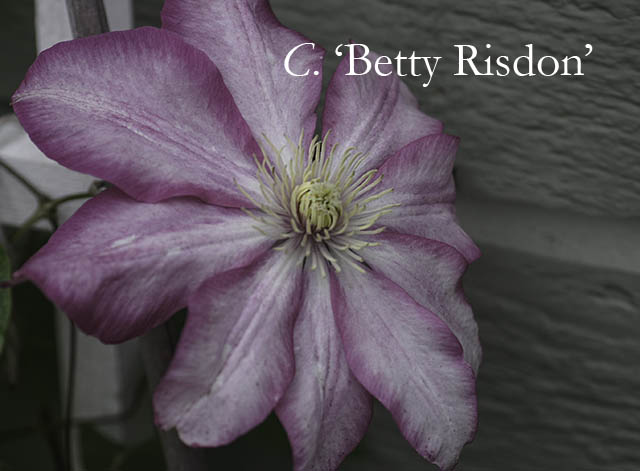Are Clematis Poisonous? To a degree, yes, as are many other plants in the Buttercup Family. RightDiagnosis.com (http://www.rightdiagnosis.com/c/clematis_poisoning/intro.htm) offers these observations: “Clematis poisoning: A flowering vine often used as an ornament house or garden plant. The plant contains a chemical (anemonin) which can cause severe mouth pain if eaten. Skin contact with the plant can also cause skin irritation.” Other websites list glycoside as an irritant as well.
One of the reasons I’m most often asked about this is because people are worried about their pets. So, I looked on the ASPCA website (http://www.aspca.org/pet-care/animal-poison-control/toxic-and-non-toxic-plants/clematis) to see what they had to say about the subject. They state that clematis are toxic to dogs, cats and horses and that the clinical signs are: salivation, vomiting, diarrhea. You can also visit: http://www.pawsdogdaycare.com/toxic-and-non-toxic-plants/clematis-poisonous-pets for more information concerning toxic plants and pets.
There are many websites out there that will give you information about the toxicity of clematis, but for one of the best and in-depth looks at the subject please visit: Drugs.com (http://www.drugs.com/npp/clematis.html).
It might interest you to know that over the years clematis were used as a treatment for different ailments by homoeopathic practitioners. Montana.Plant-Life (http://montana.plant-life.org/species/clematis_hirs.htm) documents some of the medicinal uses for Clematis hirsutissima Pursh: “A decoction of the leaves of hairy clematis has been used to treat headaches. The Navajo Indians used the root in the treatment of congested nose pain. Although no reports of toxicity have been seen for this species, some if not all members of this genus are mildly poisonous. The toxic principle is dissipated by heat or by drying.”
And still today clematis is a component in the herbal Bach’s Rescue Remedy (http://www.bachflower.com/rescue-remedy-information/). It claims that its essence is: “For those who find their lives unhappy and withdraw into fantasy worlds. They are ungrounded and indifferent to the details of everyday life. Teaches one to establish a bridge between the physical world and the world of ideas; may foster great creativity. Is also used to bring clarity and alertness to the present moment.”
On the website altMDy (http://www.altmd.com/Articles/Clematis-Herbal-Remedies) they present it as an herbal remedy stating that: “The root of the Chinese Clematis vine, Clematis chinensis has been used for centuries to treat arthritis. It is especially effective for arthritis that gets worse in cold and damp weather. A tincture of the root is used in China for patients with arthritis with good results. A decoction of the fresh leaves and small twigs is used effectively as a gargle for acute tonsillitis.”
Having said all that I thought I might mention that clematis leaves have a very acrid burning taste and would take ingesting large amounts to cause the severe symptoms. I would assume that one taste would be enough and your pet would probably not go back for second serving. I have never heard or read of any serious poisonings caused by clematis. I personally do not wear gloves when I work with clematis and I do not have any problems with blistering or irritation from my interaction (nor do I know anyone else who does). But the decision is ultimately up to you. I hope this article helps those of you who are concerned about the toxicity of clematis.
